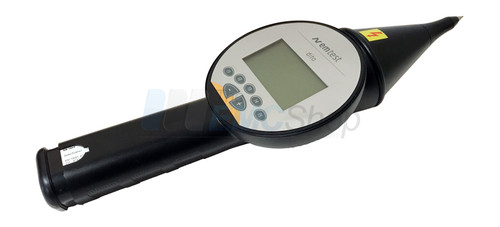Overview
Schloder SESD 216 16,5 kV ESD Simulator
The ESD Simulator SESD 216 is suitable for performing EMC tests on systems in accordance with the standard IEC / EN 61000-4-2 (ESD test). Higher test levels can be set far beyond the standard limits. Depending on the test object and test setup, two test methods are to be used:
- Air Discharge
In this case, the pulse is triggered by approaching the SESD 216 towards the DUT. The high voltage applied to the discharge electrode is discharged suddenly, resulting in a very broadband highfrequency interference spectrum. This in turn can lead to influences on the test specimens. - Contact Discharge
With this method, the probe of the generator is placed directly on the test object. The actual "impulse triggering" takes place via a relay contact and reduces the influencing factors such as approach speed, amplitude height, air humidity and temperature.
Important: In the case of non-contacting (eg painted or oxidized surface), the impulses are not triggered. The display shows "No contact". This ensures that when triggering a discharge actually takes place.
The contact discharge is the favourite test method since it is most reproducible. Air discharges are used when contact discharges are not possible - e.g. at plastic housings. The test voltages defined for each test method are shown in the table below:
| |||||||||||||||||||||||
Performance feature
- Contact control
The simulator has a "Contact control". When testing "CON" touches the test tip the surface of the EUT. When not contacted, will be no triggering of the pulse. The display shows "No contact". This ensures that at contact discharge actually occurs a discharge. - Always ready to use
The simulator operates on battery power. If the battery is empty, it can immediately be charged with the charger provided. Loading bar in the display indicate the charging status.
No change of the battery required! (according to experience replacement battery are also empty if you need them).
| Schloder SESD 216 Technical Data | |
| Generator | |
| Output voltage, adjustment via digital potentiometer | |
| Test mode air discharge | 0,2 kV to 16,5 kV, 100V steps |
| Test mode contact discharge | 0,2 kV to 10,0 kV, 100V steps |
| Polarity of the output voltage | positive and negative |
| Test modes | air- and contact discharge |
| Repetition frequency of the discharge pulses | |
| Air discharge | single pulse or repeated * *(frequency depends on the distance between the discharge electrodes and the examinant) |
| Contact discharge | single pulse, 0,1 Hz, 0,2 Hz, 1 Hz, 2 Hz, 5 Hz, 10 Hz, 20 Hz |
| Continuous operation | possible at air- and contact discharge |
| Holding time | ≥ 5 sec |
| Pre selectable counter | 1 - 9999 |
| Discharge electrodes | in conformity to IEC / EN 61000-4-2 |
| Energy storage capacity | 150 pF ± 10% |
| Discharge resistor | 330 Ohm ± 5% |
| Operation temperature range | 0 - 40° Celsius |
| Relative humidity | 0 - 60% |
| Weight | app. 1260 g |
| Power supply | |
| Supply voltage | IN: 100-240 VAC / 47-63 Hz; OUT: 9 VAC / 3 A Weight: app 200 g |












